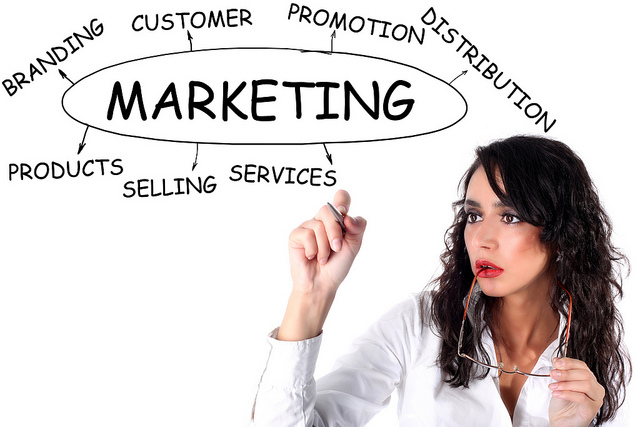To grow your new small business, you need to write a startup marketing plan. Creating a marketing plan can help you in many ways including customer identification and business growth in market. Basically, startup marketing Plan is an integral part of your business plan. So, it should highlight the marketing questions that need to be answered.
For example, the right startup marketing plan always covers the following questions and provide solutions to marketers:
- What are the customers’ needs and demands?
- What are the demographics of target customers?
- How you will reach them?
- What type of “best marketing strategies for startups” you will adopt?
- How you will increase your customers’ loyalty with business so that they can make repeatedly purchase from business?
A sound startup marketing plan for small business always answers the above questions. Your marketing plan will create a solid road map for your business growth and dramatically lead your organization up to the next level. But sometimes creating a startup marketing plan seems to be very difficult for many entrepreneurs. To help you succeed, you must include the following sections in your small business marketing plan.
15 Steps To Craft a Startup Marketing Plan

1. Marketing Plan Summary
Summary is the first section of the startup marketing plan. It gives a bird view eye to the potential readers in which everything is summarized and described briefly. If you’re going to write a marketing plan for your business then it is highly recommended that you should write your executive summary at the end, when you are done with other marketing plan sections. In this way, you can easily summarize your all marketing plan sections in your summary.
2. Target Customers
This section is completely focused on customers. In this step, you need to collect all the information that better describes your customers. It defines their psycho-graphic profiles, demographic profiles and their needs and demands, so they match with your commodities you offer. When you successfully identified your customers then it will be very helpful for you to come up with different types of marketing strategies that can better target your customers and finally boost your business sales.
3. Unique Selling Proposition USP
USP is considered to be the most important part of startup marketing plan because it is only thing that distinguishes your startup business from other competitors. Before launching your business commodities, you should create a strong unique selling proposition USP. Having a strong USP can strongly appeal your customers who desire quick delivery and reliability. For example, Whats app offers “end to end encryption”.
4. Pricing and Positioning Strategies
In this section, you need to create rational pricing and positioning strategies. Your marketing strategies must be aligned with your customers buying behavior. For example, if you’re new in market and your proposed customers belong to low or middle class, then you will have to become a price leader in the market. Be careful sometimes, having too low prices might lead your customers away from purchasing. Explain everything about positioning exactly what you want and how your pricing strategies will support them.
Related: The Psychology of Pricing: How to Price your Products Right
5. Distribution Plan Strategies
After successfully creating USP and pricing strategies for your business, you need to create a distribution plan. In this section, you need to select the channels through which you will reach your customers or how customers will make purchases from you? For example, will you offer your commodities online or offline? How your customers will make purchases from your website? If you offer your commodities offline then will your customers buy from retailers or distributors?
These are the questions that must be answered in your small business marketing plan. Think deeply about different distribution channels through which you will reach your customers. Analyze expenses and costs of each distribution channels. After selecting the right distribution channels, write them in your marketing plan.
6. Packages and Offers
If you are looking forward to boost your sales by introducing new packages and offers in order to attract new customers and also to retain your existing customers, then you should include this section in your startup marketing plan. You need to outline these offers such as discount offers, special money back guarantee, buy one get one free and free trials. It is an optional section and not necessary to include this section, but if you want to boost your startup sales and customers’ engagement then this section might work for you.
7. Marketing Materials
In order to promote your business to existing and future customers, you need marketing materials such as website, email database, newsletters, print brochures, online catalogs and business cards. In this section, you need to highlight the marketing materials you have acquired and which ones are required.
8. Promotion Strategy
The promotion section is considered to be the heart of the marketing plan for startups, because it is very important section for marketers as well as for investors. It explains everything about the promotional strategy i.e. how you’ll target your customers? There are numbers of promotional strategies available to marketers through which they can reach their customers such as event marketing, online advertising, newsletters, press releases, trade show marketing and TV ads etc.
While writing this section, you need to analyze all the pros and cons of promotional tactics and finally choose the best marketing strategies for startups that allow you to target your customers easily and effectively in affordable budget.
Read Also: 6 Reasons to Use Digital Marketing in Small Business
9. Online Marketing Strategy
Today, world is considered as global village and it is just because of internet. Like it or not, majority of entrepreneurs are now shifting their business from offline to online. The main reason of this trend is that billions of people are surfing their time online especially on social media platforms. Entrepreneurs can reach their customers easily through internet.
So, if you are going to launch your business online then you must include this section because having the right and effective marketing strategies can help your startup to attract new customers and also to gain competitive advantage. In this section, you must include the following key components in your online marketing strategy such as
- Keywords strategy like Small Business Trends
- Search Engine Optimization
- Online Advertisement strategy like Google Ad-words
- Social media strategy – Facebook, Twitter & LinkedIn
You May Like to Read: 5 Essential Search Engine Optimization Techniques to Master in 2016
10. Conversion Strategy
Conversion strategy means converting your potential customers into paying customers by employing some marketing techniques. Numbers of online businesses often share their customers’ testimonials proudly like how much their previous customers were satisfied? On the other hand, reviews and comments often play a major role in changing the buying behavior.
Websites like eBay and Amazon are using conversion strategies. New customers often make purchases on the base of previous customers’ reviews and comments. So, in this section, you need to mention your conversion strategies through which you will boost your startup sales.
11. Partnerships and Joint Ventures
Partnerships and joint ventures are the agreements between two firms and they agreements are made in order to reach to new customers. If you’re going to sign agreement with other firm in order to target new customers or have future plans about Joint Ventures and partnership then you should document this section in your marketing plan.
12. Referral Strategy
Referral strategy is a marketing technique in which existing customers are allowed to refer new customers to the company and in return they are rewarded with certain incentives. For many businesses, referral strategy is one of the most important thing through which they can lead their organization up to the next level. If you want to get new customers then you should implement this strategy in your marketing plan.
13. Tactics to Increase Commodity Transaction Prices
Boosting sales and profits are the basic aim of every organization. But it is highly important for the startups that they should pay high attention toward the transaction prices. Commodity and transaction prices are also important things because it can also play a key role in customers buying behavior. Transaction prices can dictate organizational success. For example, if you’re a marketing manager and recently you come to know that your competitors are selling the same commodity in $1000 while you’re selling the same product/service in just $900 then it may negatively affect your business sales as well as profits.
In order to overcome this issue, you need to increase your transaction prices so that you can enjoy the profits. You can increase your transaction prices by increasing the selling prices, offering packages and bundles, increase in manufacturing prices. The more profit you will earn, more you will be able to spend on your advertisements in order to gain large portion of market share.
14. Retention Strategy
Retention strategy is referred to the retention of existing customers. It is evident in market surveys that retention strategies usually play a major role in increasing the profits and revenues. That’s why many organizations often prefer to spend funds on existing customers rather than spending on new customers in order to secure them. You should include this section in your small business marketing plan to retain your existing customers. You can use different retention strategies such as customers’ loyalty programs and newsletters and document them in your marketing plan.
15. Financial Projections
Financial projection is the last and final part of your startup marketing plan. In this section, you will need to include and calculate all the marketing costs and expenses in your marketing plan. For example, how much you will spend on promotional campaign and how much you will enjoy profits or return on promotional campaigns?
Projections are always expected and based on the current market situations but the actual expenses will occur in future and future is always uncertain. So, it is not necessary that your financial projections will be 100% accurate. So, you need to be realistic while documenting this startup marketing plan section. You can set your financial projections as your goals and try hard to achieve them.
The next part of small business plan is Writing a Competitive Analysis Report. Read it and complete your startup business plan 🙂















